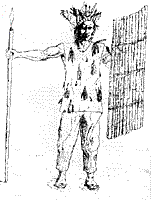Sierra Leone is a relatively young country, only forming after breaking away from the United Kingdom’s rule in 1961. However, the area that Sierra Leone now occupies has been home to indigenous people for over 2500 years. The people in this region were isolated from other indigenous people of Africa however, because of the dense surrounding tropical rainforests. This created a unique civilization that was unexposed to outside forces unlike other African cultures, such as the spread of Islamic religion. Outside contacts did not interact with the people of Sierra Leone until 1462 when a Portuguese explorer landed near the area now known as Freetown, mapping the surrounding mountains giving them the name Serra Lyoa. At this time the area was inhabited by several groups of native people such as he Bulom, Loko, Temne and Limba. These groups were politically independent from one another but would interact to trade goods and such. The most powerful and well known of these groups are the Temne people. The most well known of the Temne was Farma Tami. He was a great warrior and is regarded by the Temne people as their founder. He is said to have organised the Temne into strong kingdoms and established their importance in the country. According to tradition, Farma Tami came from the east with a great army, conquering and destroying all opposition in his advance, until he reached the estuary of the Rokel River. He established his capital in what is now Koya Chiefdom at the town of Robaga, near modern Freetown. Temne elders say that Farma Tami ruled when there were still no guns or swords—only spears, shields, knives and bows and arrows.
into strong kingdoms and established their importance in the country. According to tradition, Farma Tami came from the east with a great army, conquering and destroying all opposition in his advance, until he reached the estuary of the Rokel River. He established his capital in what is now Koya Chiefdom at the town of Robaga, near modern Freetown. Temne elders say that Farma Tami ruled when there were still no guns or swords—only spears, shields, knives and bows and arrows.
The port at Freetown became very important later in history because it would serve as a large port for transporting and moving slaves from Africa to Europe and the Americas. Sierra Leone began to mold into the country it has become today when in 1787 a group of 331 people — made up mostly by freed slaves from Great Britain — were moved to Freetown to start a new civilization. However, the idea did not work out as planned as most of the voyagers died within the first year. Several years later though, a group of more than 1000 freed slaves from the Americas travel to Sierra Leone and begin new lives in what will become known as Freetown. Over the next couple decades more and more freed slaves along with others will join in the new developing city and slowly turn Sierra Leone into what it is today.
When I was searching for info about Sierra Leone there was little to nothing about “ancient” Sierra Leone. I think there are several factors that lead to this problem. One, there just were not many people living in the area that would come to be known as Sierra Leone. There were not enough people to create substantial civilizations, just small tribes and villages scattered across the diverse landscape. These people left behind little evidence of what their lives were like and this leads to my next point. Two, because the scarcity of people in these times and the even more scarce artifacts of their civilization that they left behind people just do not put the effort or money into researching about these people. They would rather focus on things that are very well known and heavily researches such as the Egyptian pyramids. These artifacts fascinate people because that’s what they grew up learning about and hearing about, not the small villages in the little rainforests of Sierra Leone.
